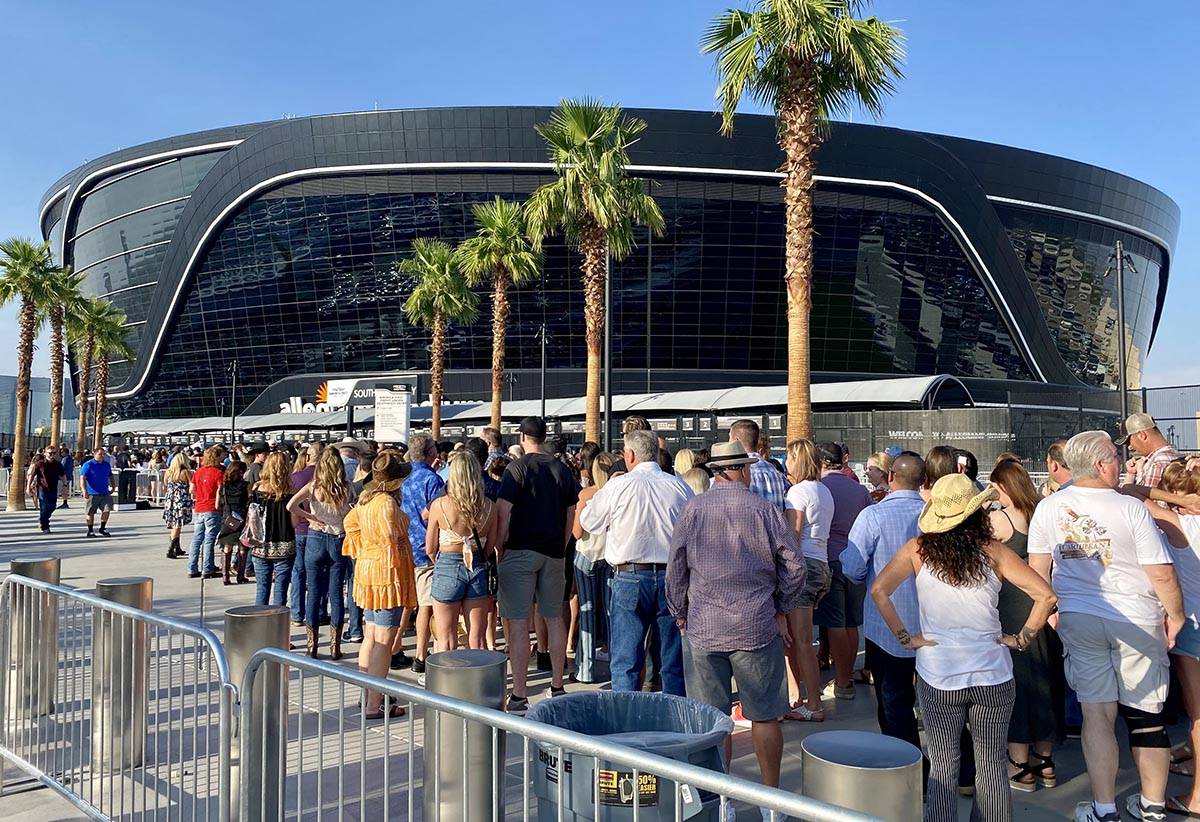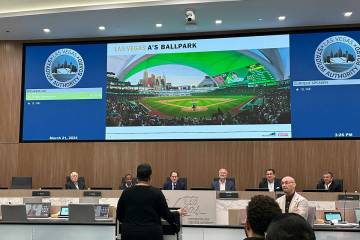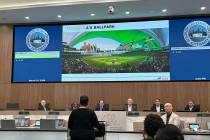Allegiant Stadium room tax revenue up but trails pre-pandemic levels
With Las Vegas’ tourism volume inching closer to pre-pandemic levels, the money generated by a room tax to pay for Allegiant Stadium bonds is steadily increasing.
In May, the latest month available, the 0.88 percent room tax on Clark County hotel rooms generated $3.1 million, up 1,862 percent over May 2020’s total of $157,454, according to Las Vegas Stadium Authority data. For a better comparison, this May’s number is still down 34 percent from May 2019’s $4.7 million generated.
“I’m pleased to say this is 20 times higher than the prior year,” Jeremy Aguero, principal with Applied Analysis, who serves as staff for the stadium authority, said at Tuesday’s stadium authority board meeting. “That is the best number we’ve seen post-COVID 19, so we’re pleased with the direction the revenues are headed.”
April also saw an uptick in room tax revenue with $2.5 million generated, down from the $4.7 million generated in April 2019.
Las Vegas fully reopened June 1 without any coronavirus restrictions in place, which should bode well for visitor volume and room tax revenue generation when last month’s figures are made available.
“The approximate rise in revenue I don’t think is any surprise to anyone on this board… visitor volume has been increasing, hotel room occupancy is increasing, visitor spending is increasing and that’s all positive,” Aguero said. “We are cautiously optimistic that trend will continue through the balance of the year and those room tax revenues will continue to increase in a manner exceeding the budget.”
With visitation lagging for over a year, Clark County twice had to dip into a debt reserve account set up in the event there was a shortfall in funds needed to make regular bond payments, which are due twice a year, once on June 1 and again on Dec. 1.
As a result, the county used $23.3 million from the reserve fund to make the combined $34.7 million bond payments in December 2020 and in June.
The debt reserve fund was created to cover two full years of bond payments — $90.2 million — if there was a deficit in room tax revenue, as there has been recently. As of June, $54.6 million remains in the reserve fund, or 60 percent of the two-year coverage goal.
Funds for the debt reserve are derived from room tax revenue after the annual debt service on the bonds is paid. Up to $9 million can be deposited into the reserve each year until the two-year cap is met.
Aguero said in June that he doesn’t anticipate the county having to utilize the debt reserve account to make December’s scheduled bond payment.
Contact Mick Akers at makers@reviewjournal.com or 702-387-2920. Follow @mickakers on Twitter.





























